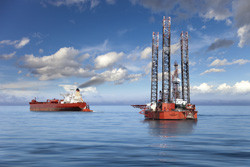Deepwater inspection made easy
Mooring chains for offshore oil and gas exploration platforms can be 2 km in length and are fixed into the seabed. Immense forces due to strong currents, ocean waves and hazardous weather events can threaten their integrity. Failure can have major impact on productivity, not to mention disastrous consequences for personnel safety and the environment. Until now, deepwater mooring lines could only be inspected by a diver or a remotely operated vehicle. Scientists adapted a novel non-destructive testing (NDT) technique to ensure they are safe to use with EU funding of the project 'Development of an advanced medium range ultrasonic technique for mooring chains inspection in water' (MOORINSPECT)(opens in new window). The ultrasonic method has been used successfully to inspect pipelines, but at lower frequencies. It was adapted here to higher frequencies, enhancing sensitivities to the cracks and corrosion that can occur at wear surfaces between links. It was then mounted on a unique chain-climbing robot that exploits it to inspect the chains. Scientists have taken a concept at technology-readiness level (TRL) 1 to a prototype chain inspection system at TRL 6. This means that the engineering feasibility of the concept has been fully demonstrated. Further, some components are actually at even higher TRLs. The team is currently seeking funding to support testing in an operational environment. MOORINSPECT technology for NDT of mooring chain links deployed on offshore platforms will have important impact on reducing the out-of-service time currently required to remove and inspect parts above water. More importantly, it will increase the safety of large offshore structures, thus minimising hazards for personnel and the environment.



